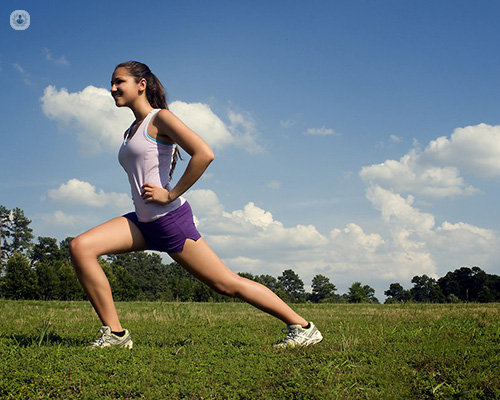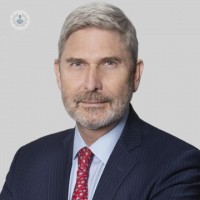Understanding the Centre of Rotation ACL technique
Written in association with:Anterior cruciate ligament (ACL) injuries are increasingly common in paediatric athletes, necessitating surgical reconstruction to restore knee stability and function. They are also common in congenital lower limb shortening.
However, the unique anatomical and physiological characteristics of growing children pose significant challenges to traditional ACL reconstruction techniques. One innovative approach that addresses these challenges is the ‘Centre of Rotation’ (CoRACL) technique.

Understanding the Centre of Rotation technique
The Centre of Rotation technique is designed to minimise the risk of growth disturbances by preserving the integrity of the growth plates (physes) while ensuring effective restoration of knee function. Traditional ACL reconstruction techniques often involve drilling tunnels through the growth plates, which can lead to growth abnormalities such as limb length discrepancies or angular deformities. The CoR technique circumvents these risks by strategically placing grafts and tunnels away from these critical areas.
Surgical procedure
The CoR technique begins with a thorough preoperative assessment using imaging modalities like MRI and X-rays to map out the patient’s growth plates and determine the optimal graft placement. During surgery, the femoral and tibial tunnels are drilled in a manner that avoids the growth plates.
This is achieved by identifying the centre of rotation of the knee, a point around which the knee pivots during movement. By aligning the graft with this centre, the technique ensures that the knee’s biomechanics are restored without compromising the growth plates, insuring a perfect stability during knee motion.
Graft selection and fixation
The choice of graft is crucial in paediatric ACL reconstruction. Hamstring autografts are commonly preferred due to their flexibility and strength. However, they are not vascularised grafts. So, part of the patellar tendon is preferred, with an attachement to the tibia. The graft is carefully harvested and prepared, ensuring an appropriate length and diameter to fit the anatomically unique paediatric knee.
Fixation of the graft is achieved using techniques that provide strong and secure attachment without interfering with the growth plates. Resorbable interference screws or cortical buttons are often used for this purpose.
Advantages of the Centre of Rotation technique
The CoR technique offers several advantages over traditional methods. By preserving the growth plates, it significantly reduces the risk of growth disturbances.
Additionally, aligning the graft with the knee’s natural centre of rotation ensures more accurate restoration of knee kinematics, leading to better functional outcomes. This technique also allows for earlier return to sports and physical activities, which is crucial for the active paediatric population.
Postoperative care and rehabilitation
Postoperative care includes a structured rehabilitation programme tailored to the child’s age and activity level. Emphasis is placed on restoring range of motion in the knee, strength, and proprioception while gradually reintroducing sport-specific activities. Regular follow-up appointments are essential to monitor the integrity of the graft and the continued growth of the patient.


